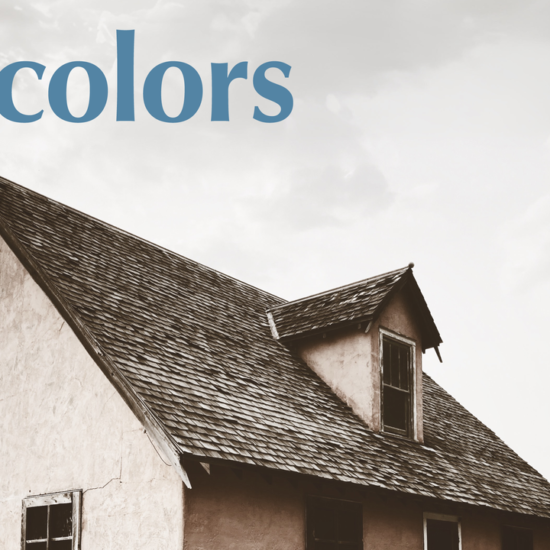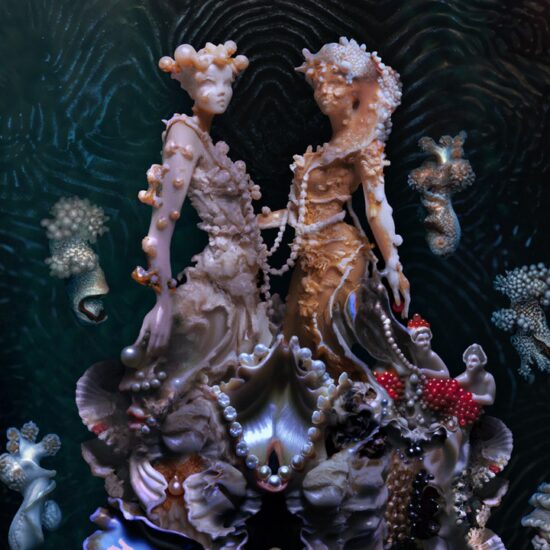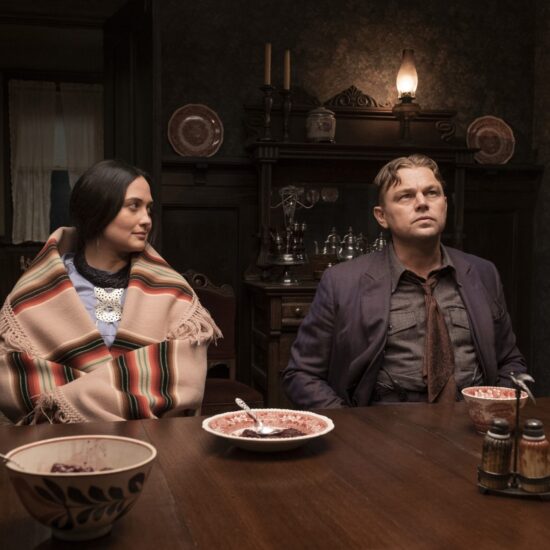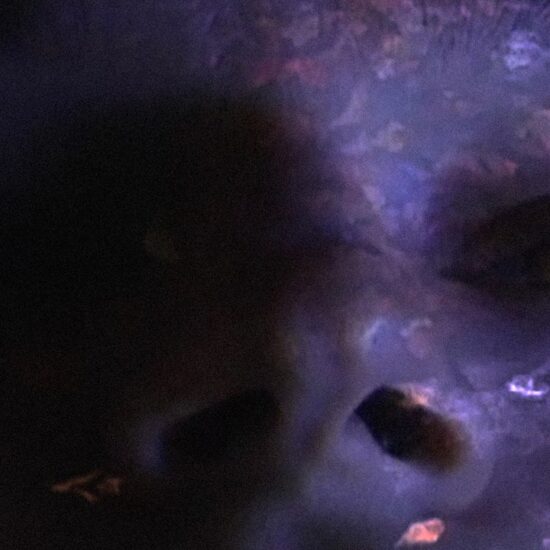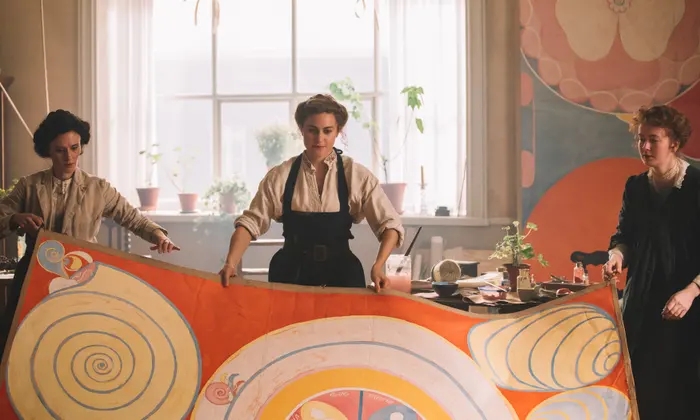
Don’t feel bad if you haven’t heard of the name Hilma af Klint until recently — or before finding your way to “Hilma,” Lasse Hallström’s somewhat syrupy, conventional yet still respectable attempt to broaden the general public’s knowledge of, and affection for, the Swedish abstract artist. If so, you can hardly be blamed for your unawareness, considering af Klint’s longtime (and only recently reversed) obscurity in art circles.
Hers is a story as old as time: A brilliant, ahead-of-her-time woman goes largely ignored despite significant contributions to her field, while her male counterparts claim the spotlight and all the glory. In that regard, it was af Klint herself who invented the notion of abstract painting years before Wassily Kandinsky, one of the most regarded Modernists and abstract painters of all time. And when she died in 1944, her magnificent work was locked away and kept from the public eye for years.
In the last decade, extensive museum exhibitions have sought to reintroduce her art across Europe and the U.S.; “Beyond the Visible,” a 2019 documentary by Halina Dyrschka, examined af Klint’s artistic importance and imagination. Hallström continues this cinematic and cultural revival by transposing her tale into a two-hour feature that is sensual, whimsical (sometimes to a fault) and feels as comfortable to slip into as a silk robe.
The film’s cozily saccharine style and glossy sensory aesthetic — Hallström signatures across the populist likes of “Chocolat,” “The Hundred-Foot Journey” and “The Cider House Rules” — sometimes mesh well with af Klimt’s story. According to the film’s thesis, she was as influenced in her art by her kid sister’s untimely passing as she was by her eccentric spiritual leanings and curiosities. Her work is alive and ethereal, featuring dizzyingly circular patterns that feel positively galactic.
Aided by his DP Ragna Jorming, Hallström warmly embraces these qualities, for the most part with palpable curiosity for her process and inner world. But his style can work against af Klimt too. When the story docilely engages with Hilma’s younger days with her sister across pastoral settings of their youth, later squarely emphasizing her grief through recurring and predictable visions of her sister, you can’t help but feel that Hallström is a traditionalist and his subject is anything but.
Still, Hallström mostly strikes a nice balance between approachability and mystique, between the definitive and the abstract, getting a huge amount of help from his daughter Tora’s open and warm performance in her first leading role. Her real-life mother Lena Olin, on the other hand, plays the older Hilma, going door to door, trying to generate interest for her art in a cruel world that has no room for her.
We come to understand that it’s always been that way for Hilma. Hallström puts special emphasis on Hilma’s arrival at art school as a hungry, aspiring artist of wildlife, seashells and flowers. She and several other equally eager and fiery female students infuriatingly get asked to use the side entrance, in case they ever doubted their place in a male-dominated world.
It is there, in the company of four other women — Cornelia (Rebecca Calder), Mathilda (Lily Cole), Sigrid (Maeve Dermody) and Cassel (Catherine Chalk) — that Hilma forms a group called The Five, a spiritual collective that studies theosophy together and creates art collectively as a sisterhood of sorts. Hallström steers clear of cheesiness when following the clan’s seances and spiritual awakenings, while Jorming’s camera maintains a sense of feather-light otherworldliness, as well as its focus on putting the viewer in Hilma’s body, soul and headspace.
Tora Hallström truly looks and feels like a haunted creator in these scenes, channeling the experience of an artist whose brush seems possessed and conducted by unseen forces. The script gives ample space to Hilma’s collaborators, with the women both harmonizing and clashing over time. Certain passages in the film allude to Hilma’s sexuality and romantic affairs with women, but these segments never quite reach their romantic and sensual potential, ultimately feeling rather coy despite taking up a good chunk of the storyline.
There is brief room here for men too, as both pitiless detractors and vague supporters of Hilma’s work. In the former category is Tom Wlaschiha’s Rudolf Steiner, the Austrian philosopher all too eager to write off the budding artist. In the latter, Paulius Markevicius’ Edvard Munch has one of the film’s more delightful scenes. But this is a boundlessly feminine film about Hilma’s soul, and a cavernous creative yearning that gives the groundbreaking artist all the confidence she needs to perceive and interpret what the rest of us average mortals can’t see with our naked eyes. It’s an openhanded celebration, flaws and all.








